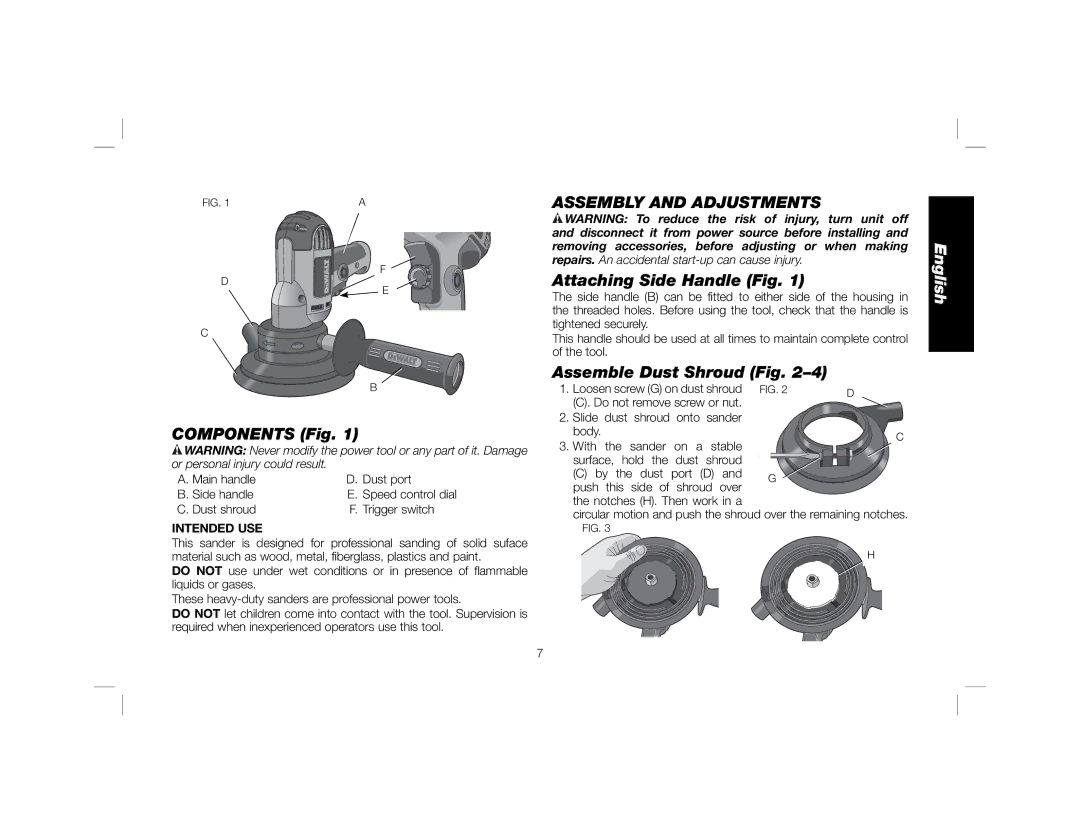
FIG. 1 | A |
F
D
![]()
![]()
![]() E
E
C
B
COMPONENTS (Fig. 1)
![]() WARNING: Never modify the power tool or any part of it. Damage
WARNING: Never modify the power tool or any part of it. Damage
or personal injury could result. |
|
A. Main handle | D. Dust port |
B. Side handle | E. Speed control dial |
C. Dust shroud | F. Trigger switch |
INTENDED USE
This sander is designed for professional sanding of solid suface material such as wood, metal, fiberglass, plastics and paint.
DO NOT use under wet conditions or in presence of flammable liquids or gases.
These
DO NOT let children come into contact with the tool. Supervision is required when inexperienced operators use this tool.
ASSEMBLY AND ADJUSTMENTS
![]() WARNING: To reduce the risk of injury, turn unit off and disconnect it from power source before installing and removing accessories, before adjusting or when making repairs. An accidental
WARNING: To reduce the risk of injury, turn unit off and disconnect it from power source before installing and removing accessories, before adjusting or when making repairs. An accidental
Attaching Side Handle (Fig. 1)
The side handle (B) can be fitted to either side of the housing in the threaded holes. Before using the tool, check that the handle is tightened securely.
This handle should be used at all times to maintain complete control of the tool.
Assemble Dust Shroud (Fig. 2–4)
1. | Loosen screw (G) on dust shroud FIG. 2 | D | |
| (C). Do not remove screw or nut. |
| |
|
|
| |
2. | Slide dust shroud onto sander |
|
|
| body. |
| C |
3. | With the sander on a stable |
| |
|
| ||
| surface, hold the dust shroud |
|
|
| (C) by the dust port (D) and | G |
|
| push this side of shroud over |
| |
|
|
| |
| the notches (H). Then work in a |
|
|
circular motion and push the shroud over the remaining notches. FIG. 3
H
7
English
